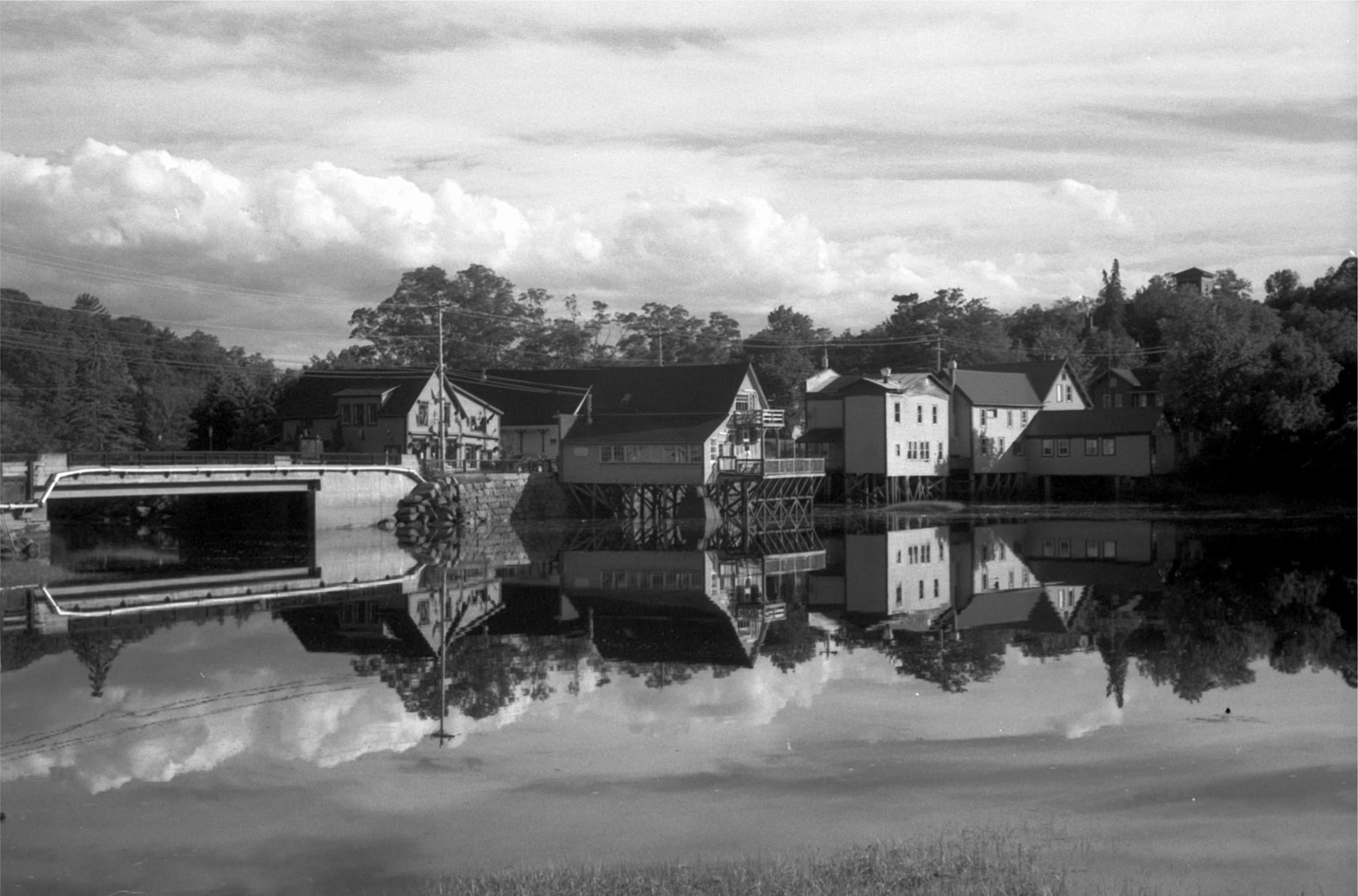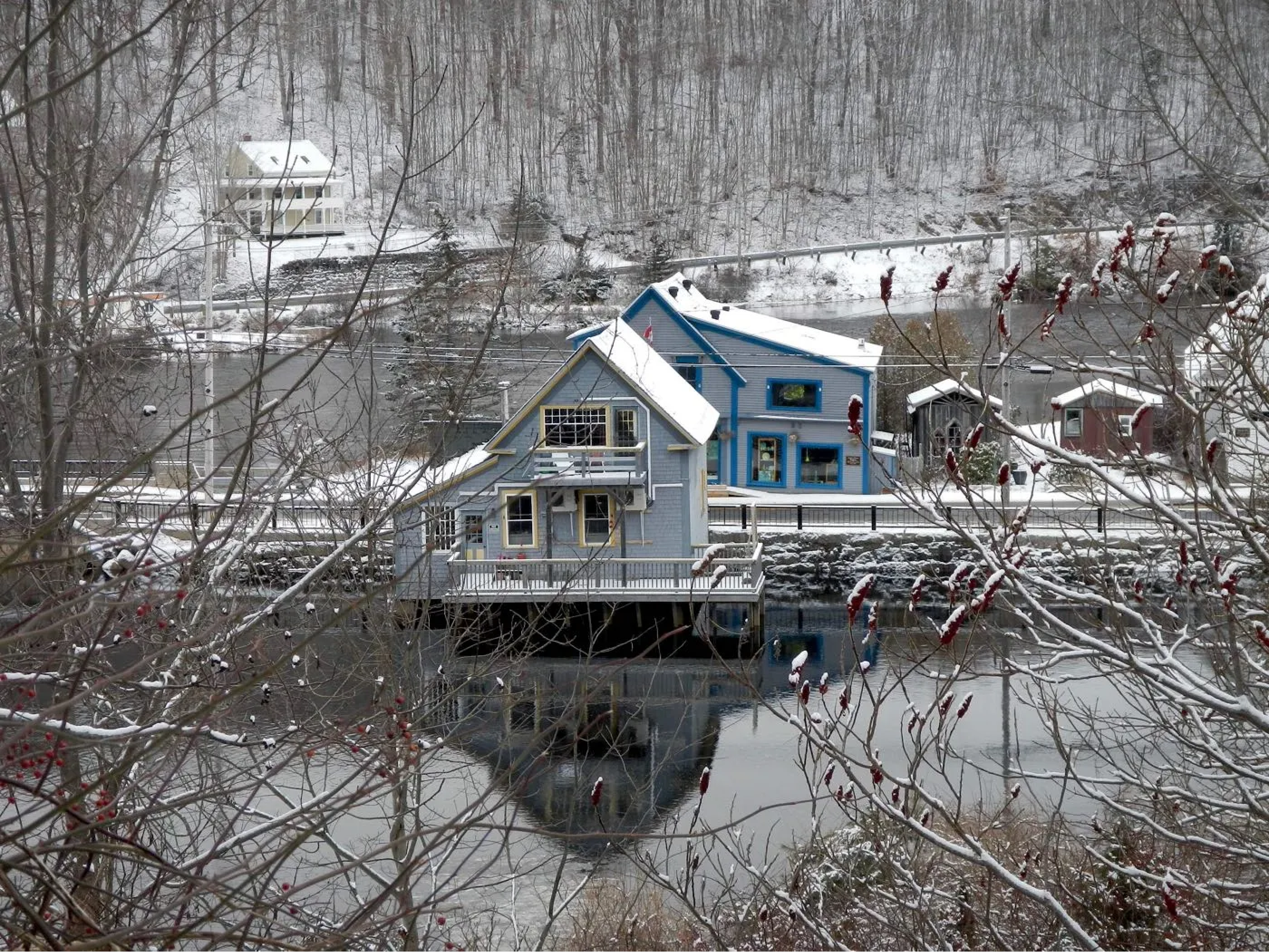Bear River, Nova Scotia has a unique history as a timeless home for the Mi’kmaq people, Acadian settlements, shipbuilders, and artists. Today, it’s characterized by its creative community, dramatic tides, houses on stilts and volunteer-led governance.
We acknowledge that we are in Mi’kma’ki, the ancestral and unceded territory of the Mi’kmaq People. This territory is covered by the “Treaties of Peace and Friendship” which the Mi’kmaq and Wolastoqiyik (Maliseet) People first signed with the British Crown in 1725. The treaties did not deal with the surrender of lands and resources, but in fact, recognized Mi’kmaq and Wolastoqiyik (Maliseet) title and established the rules for what was to be an ongoing relationship between nations.

Our History
L’sitkuk (which translated into English means “flowing along by high rocks” or conveys “water that cuts through”) is the original name for the Bear River Mi’kmaq community, which is part of the Mi’kmaq First Nation. It has a rich and diverse history that spans thousands of years. The Indigenous history of Bear River is deeply rooted in the land, with the Mi’kmaq people being the original inhabitants of the area. The Mi’kmaq have a long-standing presence in the region, and their culture and traditions continue to be cherished by the community to this day. The Mi’kmaq belonged to the Wabanaki Confederacy, a group of Indigenous nations that includes the Mi’kmaq, Maliseet, Passamaquoddy, Abenaki, and Penobscot peoples. Bear River was historically a meeting location for the Wabanaki Confederacy, where various nations gathered to trade, share knowledge, and conduct diplomatic relations. The Bear River First Nation, a Mi’kmaq community located nearby, plays an active role in preserving and promoting Mi’kmaq heritage and traditions in the area.
In the 17th and 18th centuries, the Acadians settled in Bear River, drawn to the fertile land and abundant natural resources. The Acadians developed a thriving agricultural community, building dykes and cultivating the rich soil to produce crops such as wheat, corn, and potatoes. Today, the Acadian influence can still be seen in the architecture of many of the buildings around Bear River, as well as in the local cuisine and cultural traditions of the area.
In the 19th century, Bear River became a hub of shipbuilding activity, with numerous ships constructed in its shipyards. The ships built in Bear River were known for their quality and durability, and were used for fishing, transportation, and trade. The shipbuilding industry flourished in Bear River during this period, contributing significantly to the local economy.
In the 1970s, Bear River experienced an influx of artists and draft dodgers seeking an alternative lifestyle. This diverse group of newcomers brought their creative talents and innovative ideas to the community, contributing to Bear River’s vibrant arts scene. One notable project during this time was the Solar Aquatics project, which aimed to develop sustainable and eco-friendly practices in water treatment using aquaculture and solar energy.
Today, Bear River is a thriving village that prides itself on its unique blend of history, arts, and culture. The community is known for its picturesque landscapes, welcoming residents, and vibrant arts scene. Bear River boasts a strong sense of community, with various volunteer committees governing and managing its affairs. The village continues to evolve and grow, while preserving its rich history and cultural heritage.

Village Status
Bear River is a unique and picturesque community that is often referred to as a village, but in reality, it is not an official village. Instead, it is an unincorporated area that straddles two counties: Digby County and Annapolis County. This means that Bear River does not have its own municipal government or elected officials, but instead falls under the jurisdiction of the two counties it sits in.
Despite not having official village status, Bear River has a strong sense of community and a rich history that is celebrated by its residents and visitors alike. The area has a small population of around 700 people, who are spread out across the two counties. The community of Bear River is run by various volunteer committees, who work tirelessly to maintain the area’s natural beauty, support local businesses, and promote cultural events. This highlights the spirit of cooperation and mutual support that characterizes this tight-knit community.
Continue learning about Bear River
Read all about Bear River’s rich history and community projects by checking out the Tidal Village website.
